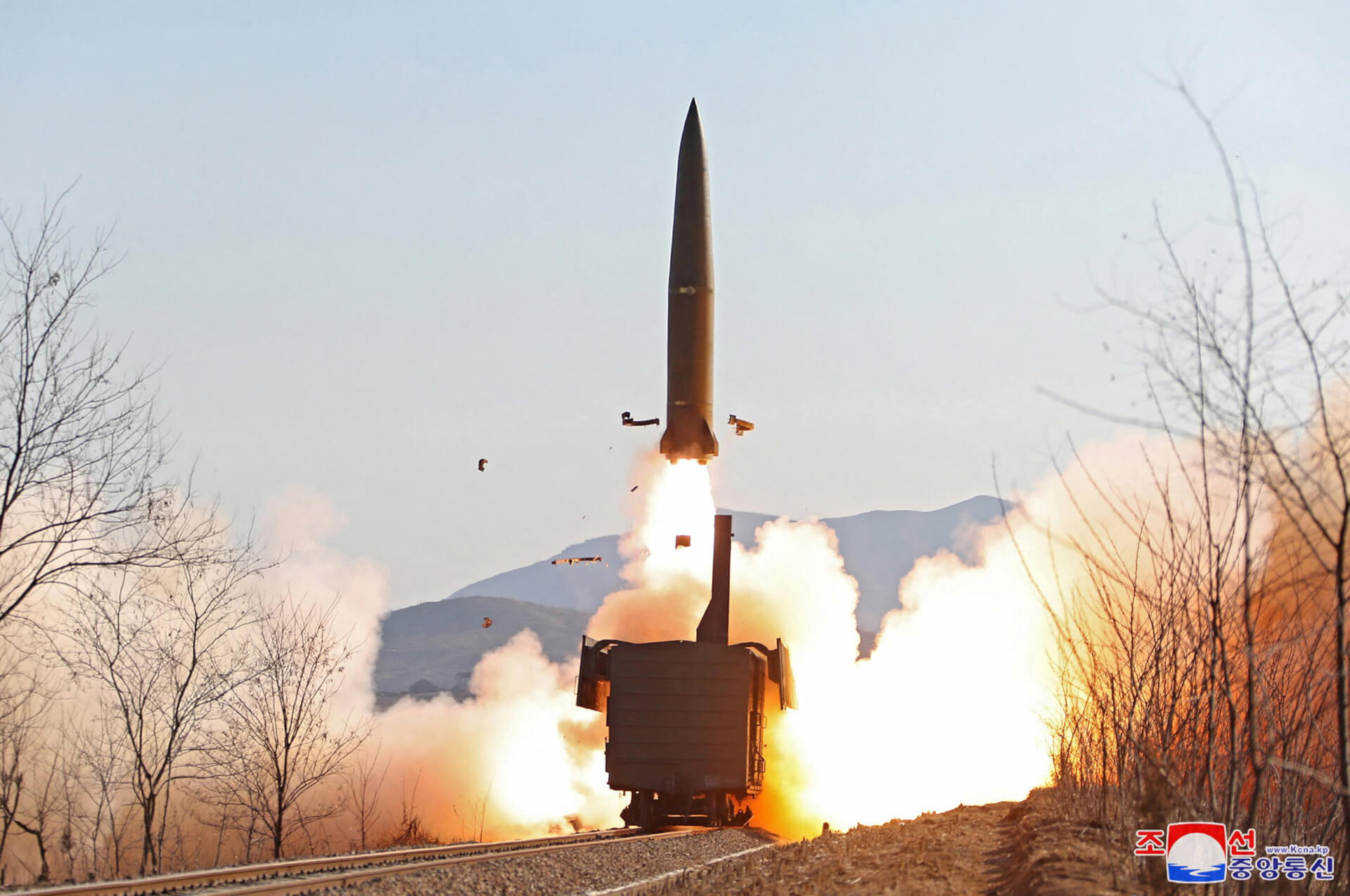In its first major weapons test since June, North Korea fired at least one ballistic missile into the Sea of Japan on Sunday morning ahead of a four-day joint military exercise between the United States (US) and South Korea.
Japanese Defence Minister Yasukazu Hamada said the missile reached a peak altitude of roughly 50 kilometres and landed just outside of Japan’s exclusive economic zone, which extends 370 kilometres (kms) from its coast. He added that the weapon appeared to fly on an irregular trajectory and that Tokyo estimated that it would have travelled around 400 kms if it had flown normally.
Japanese Prime Minister (PM) Fumio Kishida condemned the launch later on Sunday, describing it as “absolutely unacceptable” and saying it “threatens the peace and security of our country, the region and the international community.”
North Korea has launched a suspected ballistic missile. More updates to follow.
— PM's Office of Japan (@JPN_PMO) September 24, 2022
Meanwhile, South Korea’s Joint Chiefs of Staff (JCS) said on the same day that the secretive regime had fired a short-range ballistic missile from Taechon in the North Pyongan Province at 6:53 am local time. According to Seoul, the missile travelled about 600 kms and reached a maximum altitude of 60 kms.
Seoul’s National Security Council (NSC) held an emergency meeting in response to the launch, led by national security officer Kim Sung-han. It strongly condemned the ballistic missile launch, calling it a “provocation” that violates United Nations Security Council (UNSC) resolutions.
“The participants [of the NSC meeting] identified North Korea’s missile launch as one that clearly violates UN Security Council resolutions, and condemned the act as a provocation raising tension on the Korean Peninsula and the region. They also made clear that it cannot be justified for any reason,” the presidential office said in a statement. It further added that the NSC had “agreed to take active measures maintaining close cooperation with the US and other friendly nations.”
The NSC also acknowledged that it was Pyongyang’s first ballistic missile launch since it passed a new law that allows it to preemptively use tactical nuclear weapons.
The South Korean and the US militaries are maintaining full readiness posture while closely cooperating, JSC added. This is the 19th missile launch this year, according to CNN’s count. Last launch was on August 17. (2/2) via @imgawonbae
— Will Ripley (@willripleyCNN) September 25, 2022
Earlier this month, North Korea passed a law that affirms its right to use preemptive nuclear strikes to defend itself, with Supreme Leader Kim Jong-Un declaring that the law makes the country’s nuclear status “irreversible.” He stressed that Pyongyang will never abandon nuclear weapons, as it needs them to counter the US, and that even another 100 years of sanctions would not bring the country to surrender the weapons.
North Korea carried out over 30 missile tests this year alone, including six Intercontinental Ballistic Missiles (ICBMs). The US and South Korea have warned that the Kim Jong-un administration has already completed preparations to carry out a seventh nuclear test, the country’s first since 2017.
Pyongyang’s latest test came only two days after the US Navy’s nuclear-powered aircraft carrier, USS Ronald Reagan, arrived in South Korea for a four-day joint military drill. It also took place just a day before US Vice President Kamala Harris arrived in Tokyo to attend the funeral of assassinated former PM Shinzo Abe. Harris’ trip to the region also includes a visit to South Korea, which starts on Thursday.

